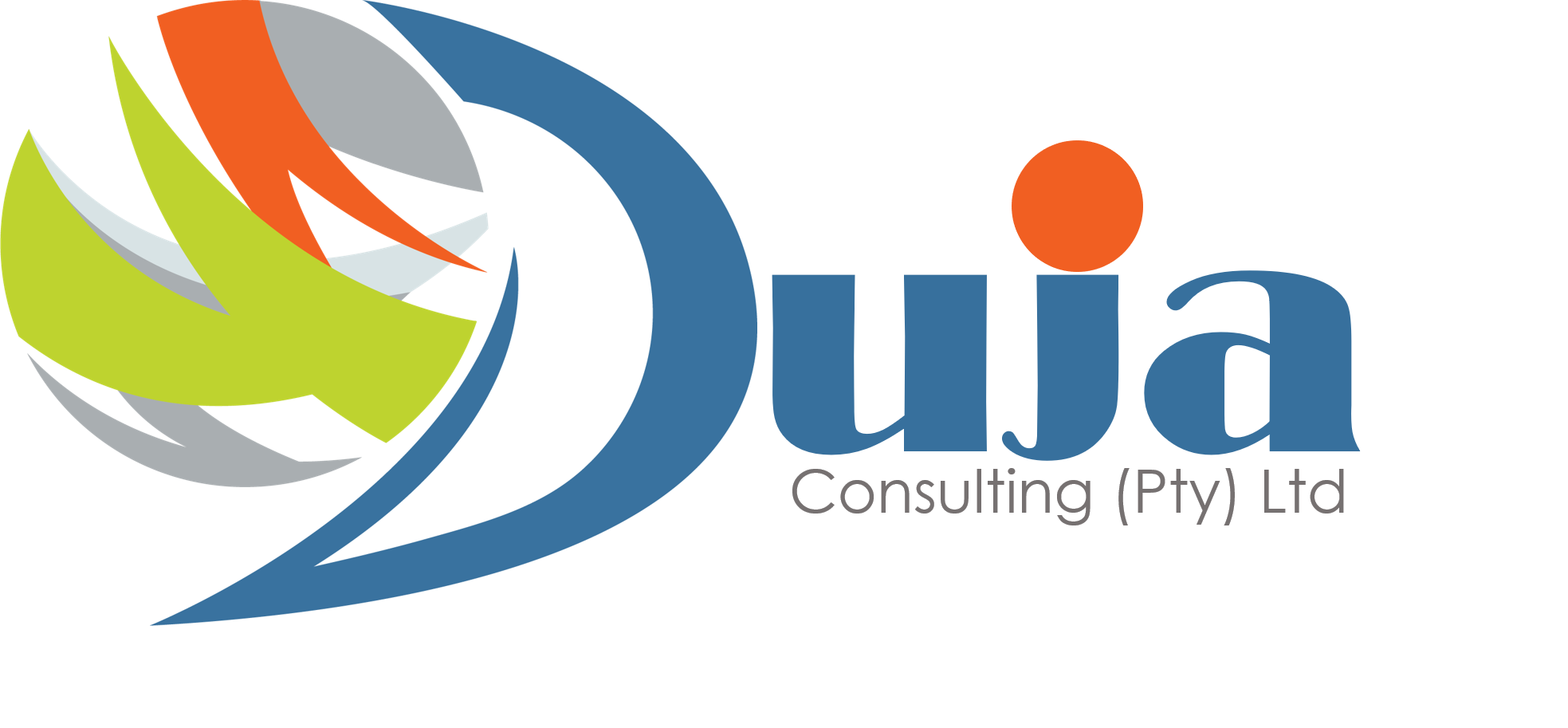The Role of Forensic Audits in the Retail Supply Chain
Retail supply chains are under pressure from every angle – tight margins, complex vendor deals, growing returns, and rapidly expanding digital channels. That complexity also creates space for fraud, collusion, and costly “leakage” that is hard to explain and even harder to prove.
This article explores how forensic audits help retailers move beyond assumptions and anecdotes to hard evidence – from procurement and inbound logistics through to warehousing, stores, e-commerce, and reverse logistics.
We unpack common fraud schemes, the role of data analytics, and how to turn investigative findings into stronger controls, better governance, and a culture where misconduct struggles to survive.
If you are grappling with unexplained shrinkage, suspicious supplier patterns, or red flags in your returns, this piece is for you.
Contact Duja Consulting for a confidential discussion about your retail supply chain risks.

The Role of Forensic Audits in the Retail Supply Chain
Brought to you by Duja Consulting
Introduction: Why Forensic Audits Belong in the Retail Supply Chain
Retailers live and die by the efficiency, integrity, and resilience of their supply chains. Margins are tight, product ranges are vast, and customer expectations for availability, speed, and value are relentless. In this environment, even modest leakages through fraud, error, or collusion can quietly erode profitability, distort performance reporting, and damage brand trust.
Most retailers already invest in internal audit, external audit, and various forms of loss prevention. Yet these mechanisms are not always designed to answer one critical question: What exactly happened, who was involved, and how can we prove it? That is the territory of forensic audits.
Forensic audits combine detailed transactional analysis, investigation techniques, and evidence-ready documentation to uncover how irregularities occur along the supply chain. They move beyond “What is the variance?” to “What is the pattern, what is the scheme, and where is the accountability?” They link stock shrinkage figures to human behaviour, process weaknesses, and sometimes criminal conduct.
From vendor selection and contract negotiation to inbound logistics, warehousing, store operations, e-commerce fulfilment, and reverse logistics, the retail supply chain presents multiple opportunities for fraud and abuse. These schemes are often subtle, repeatable, and deliberately hidden. Forensic audits provide retailers with the tools to detect and dismantle such schemes and to convert the findings into stronger controls, better governance, and a culture where misconduct is more difficult to sustain.
This article explores how forensic audits add value at each stage of the retail supply chain, the most common fraud typologies, and the practical steps retailers can take to integrate forensic thinking into day-to-day operations. It also outlines how a specialist partner such as Duja Consulting can support retailers to investigate irregularities, protect value, and rebuild stakeholder confidence.
1. What Makes Retail Supply Chains Vulnerable?
Retail supply chains have characteristics that create fertile ground for fraud and irregularities:
- High transaction volumes
Thousands or millions of low-value transactions pass through procurement, logistics, and point-of-sale systems every day. That makes manual monitoring impractical and allows patterns of small, repeated abuses to go unnoticed for long periods. - Fragmented responsibilities
Different teams handle sourcing, contracts, purchase orders, receiving, warehousing, merchandising, transport, and store operations. When duties and accountability are fragmented, no single owner sees the full picture. - Thin margins and promotional complexity
Retailers rely heavily on promotional funding, rebates, and complex discount structures from suppliers. These arrangements can be manipulated, mis-reported, or selectively applied to benefit particular parties. - Reliance on third parties
Outsourced logistics, franchised stores, third-party marketplaces, and external service providers introduce additional interfaces where collusion, overbilling, and quality manipulation can be concealed. - Legacy systems and data gaps
Diverse systems across procurement, inventory, finance, and point-of-sale often do not integrate smoothly, leading to data quality issues and blind spots where irregularities can be hidden.
Forensic audits are designed to pierce this complexity by reconstructing what actually occurred, reconciling data from multiple systems, and following the money, the stock, and the decision-trail step by step.
2. Forensic Audits versus Traditional Audits
Traditional audits focus on whether controls, processes, and financial statements align with policies, accounting standards, and regulatory expectations. They are largely compliance-focused and sample-based, and they assume that most transactions are legitimate.
Forensic audits differ in several ways:
- Objective
The aim is to detect, investigate, and quantify suspected fraud, corruption, or irregularities – not just to test design and operating effectiveness of controls. - Mindset
Forensic audits assume that some parties may have deliberately concealed misconduct. Auditors therefore adopt a sceptical, investigative posture and look for red flags, anomalies, and patterns that may indicate a scheme. - Scope and methods
Forensic audits rely heavily on data analytics, full-population testing, forensic imaging of systems where required, targeted interviews, background checks, and document review. - Evidence standard
Findings are documented to support possible disciplinary action, recovery efforts, insurance claims, or legal proceedings. Chain-of-custody, evidentiary standards, and careful documentation are crucial.
In the retail supply chain, forensic audits may be triggered by unexplained shrinkage, suspicious vendor relationships, whistle-blower complaints, abnormal rebate patterns, or inconsistencies between physical stock and recorded figures.
3. Mapping Risk: Where Forensic Audits Focus in the Retail Supply Chain
A forensic lens can be applied across the full supply chain.
Key risk points include:
- Supplier selection and onboarding
- Conflicts of interest between buyers and suppliers
- Shell companies or related-party vendors
- Collusion in tenders and restricted supplier lists
- Contracting and commercial terms
- Hidden rebates and “off-book” incentives
- Manipulated discounts, listing fees, or marketing contributions
- One-sided clauses that do not reflect true negotiation
- Procurement and ordering
- Over-ordering or ordering unnecessary goods
- Inflated prices versus market benchmarks
- Purchase orders raised to regularise pre-arranged deals
- Inbound logistics and receiving
- Short deliveries with full invoicing
- Deliberate acceptance of near-expiry or damaged stock
- Collusion between receiving staff and transporters
- Warehousing and inventory management
- Theft and pilferage by staff or third parties
- Mis-labelling or re-labelling of stock
- Falsified write-offs or “damages”
- Store operations and point of sale
- Employee collusion with customers
- Fictitious refunds and voided sales
- Discount abuse and loyalty manipulation
- E-commerce and digital channels
- Fraudulent orders, chargeback abuse, and identity fraud
- Promotion and voucher abuse
- Bots and organised online fraud rings
- Returns and reverse logistics
- Return of used or swapped goods
- Empty box returns
- Over-crediting customers or insiders authorising irregular returns
A well-designed forensic audit starts with a risk map of these areas and then uses data analytics and process understanding to detect where anomalies cluster.
4. Procurement and Supplier Fraud
Procurement is often the starting point for forensic audits in retail.
Common schemes include:
- Kickbacks and conflicts of interest
Buyers steer business toward favoured suppliers in exchange for personal benefits. This can result in higher prices, inferior quality, or suboptimal suppliers. - Bid-rigging and collusive tendering
Suppliers “take turns” winning tenders; losing bids are merely window dressing, and commercial terms are pre-agreed. - Non-existent or related-party suppliers
Shell companies created by employees or their associates invoice for goods or services that are never delivered, or are delivered at inflated prices. - Manipulated specifications
Product specifications are designed to suit a specific supplier, limiting competition and undermining value for money.
Forensic audits in procurement typically combine supplier master-data analysis, background checks, price benchmarking, unusual pattern detection (for example, clusters of awards just under approval thresholds), and cross-checking bank accounts and contact details for overlaps between vendors and employees.
5. Inbound Logistics and Receiving Irregularities
Once goods are on the move, opportunities arise for loss and manipulation:
- Short-receipting with full payment
Fewer units are delivered than invoiced; staff may falsify receiving documentation to conceal the shortage. - Substandard or near-expiry goods
Suppliers deliver inferior stock that technically meets basic documentation requirements but fails quality expectations. Receiving staff may accept these goods in exchange for incentives. - Diversion of stock
High-value items are removed in transit, replaced with lower-value goods, or simply never arrive at the warehouse.
Forensic audits focus on reconciling purchase orders, delivery notes, goods-received vouchers, weighbridge data, GPS logs and, where available, CCTV footage. Analytics can highlight suppliers or routes associated with higher shortages or write-offs.
6. Warehousing, Inventory Shrinkage, and Stock Manipulation
Inventory shrinkage – the gap between recorded and actual stock – is a major cost driver in retail. It may result from theft, damage, errors, or fraud.
Forensic audits in warehouses look beyond top-line shrinkage figures to identify:
- Systematic pilferage
Staff remove small quantities over long periods, often focusing on high-value, easily resold items. - Fictitious write-offs
Stock is recorded as damaged, expired, or obsolete, but is in fact diverted and sold. - Stock count manipulation
Physical counts are manipulated to conceal previous thefts, or to create a “buffer” of unrecorded stock for later removal. - Master data and unit-of-measure games
Incorrect pack sizes, barcodes, or unit-of-measure settings can be used to hide discrepancies.
Forensic techniques include surprise stock counts, reconciliation of warehouse movements against system records, root-cause analysis of recurrent shrinkage in specific locations, and forensic interrogation of stock-adjustment logs, user IDs, and time stamps.
7. Logistics and Transport Fraud
Retailers increasingly rely on third-party logistics providers and complex transport networks.
Typical fraud patterns include:
- Fuel and mileage fraud
Inflated fuel claims, manipulated mileage claims, and collusion between drivers and fuel stations. - Diversion and re-routing
Goods are re-routed to unauthorised destinations; paperwork is altered to disguise the diversion. - Phantom deliveries and forged documentation
Deliveries recorded in systems did not occur, or documentation is created to cover missing loads.
Forensic audits may review telematics data, GPS traces, fuel card records, and weighbridge information alongside transport invoices and proof-of-delivery documentation. Patterns such as repeated route deviations, unusual fuel consumption, or frequent “lost in transit” incidents are typical red flags.
8. Store Operations, Point of Sale, and Internal Collusion
At store level, the focus is often on shoplifting and external theft.
However, forensic audits repeatedly show that internal collusion can be just as damaging:
- Refund and void schemes
Staff process fictitious returns or void legitimate sales and remove the equivalent cash or stock. - Sweethearting
Employees give friends or accomplices unauthorised discounts or allow goods to pass through tills without proper scanning. - Price override and markdown abuse
Excessive manual price overrides, strategic markdowns, or “manager’s discretion” discounts used as a vehicle for fraud.
Modern point-of-sale systems generate exception reports on voids, refunds, overrides, and no-sales. Forensic auditors analyse these patterns across staff, stores, times, and product categories to identify outliers and then test underlying transactions in detail.
9. Returns Fraud and Reverse Logistics
Returns and reverse logistics are now a core part of the retail supply chain, particularly in e-commerce.
They are also a growing source of fraud and abuse, such as:
- Returning used, damaged, or counterfeit goods as if they were new
- Switching items (returning a cheaper product in the packaging of a more expensive one)
- Returning empty boxes
- Exploiting generous “no questions asked” or extended returns policies
This type of fraud not only creates direct financial loss but also distorts inventory accuracy, causes operational delays, and undermines trust in policies that genuine customers value. Returns fraud has been rising in many markets, adding significant cost to retailers’ reverse-logistics operations.
Forensic audits in this area link customer accounts, return histories, payment methods, and product categories to identify abusive patterns, while process reviews challenge overly permissive policies that cannot be effectively controlled.
10. E-Commerce and Digital Channel Forensics
Online retail channels create new attack surfaces:
- Payment and identity fraud
Use of stolen cards, synthetic identities, and chargeback abuse. - Promotion and voucher abuse
Reuse of single-use vouchers, exploitation of coupon combinations, and organised exploitation of promo loopholes. - Organised fraud rings
Groups of fraudsters coordinating large volumes of seemingly unrelated orders to bypass basic fraud checks.
Forensic audits in digital channels rely heavily on advanced analytics, device fingerprinting, geolocation checks, IP and email analysis, and cross-channel pattern detection. The goal is to identify clusters of suspicious activity and refine rules to block fraud without generating excessive false positives that harm legitimate customers.
11. The Role of Data Analytics and Forensic Technology
Given the volume and complexity of retail data, forensic audits are increasingly data-driven:
- Full-population testing
Instead of sampling, forensic auditors interrogate every relevant transaction within a defined period. - Anomaly detection
Data analytics identifies unusual patterns – such as out-of-pattern price changes, abnormal discounts, repeated small write-offs, or unusual supplier payment cycles. - Benford’s Law and statistical techniques
Where appropriate, auditors examine the distribution of digits in transaction values to detect fabricated numbers or manipulated invoices. - Network analysis
Visualising relationships between employees, suppliers, bank accounts, and addresses can reveal hidden connections and potential collusion. - Continuous monitoring
Analytics can be embedded into ongoing operations, creating alerts when risk thresholds are breached, rather than waiting for year-end reviews.
Technology does not replace investigative judgement; it amplifies it. Skilled forensic teams interpret anomalies, distinguish genuine errors from deliberate schemes, and focus investigative effort where the risk is highest.
12. Turning Findings into Stronger Controls
A forensic audit should not end with a report describing past events.
Its real value lies in strengthening the control environment:
- Root-cause analysis
Each scheme is traced back to the control gaps, cultural factors, or incentive structures that made it possible. Were approval limits too high or too easily overridden? Were duties inadequately segregated? Were staff poorly trained or under pressure to “make the numbers”? - Control redesign
Recommendations may include improved segregation of duties, tighter access controls in systems, enhanced approvals for high-risk transactions, or more robust vendor due diligence. - Policy and procedure updates
Policies on returns, promotions, vendor selection, and conflict-of-interest declarations are aligned with identified risks and made more practical to enforce. - Training and awareness
Real-world case examples from the forensic audit can be incorporated into training for procurement staff, store managers, and logistics teams – making risks tangible rather than theoretical. - Ongoing monitoring and key risk indicators
The analytics used in the forensic investigation can be converted into dashboards and periodic exception reports, enabling earlier detection in future.
13. Culture, Ethics, and the Importance of a Speak-Up Environment
Fraud and misconduct flourish where people believe they will not be caught or where they rationalise misconduct as “just the way things are done”.
Forensic audits often reveal not only technical control weaknesses, but also:
- Tolerance of small breaches that escalate over time
- Misaligned incentives that reward results irrespective of how they are achieved
- Fear of speaking up, particularly in areas where senior staff may be implicated
Retailers can reinforce the deterrent effect of forensic audits by:
- Promoting clear, visible consequences where wrongdoing is proven
- Providing safe, independent whistle-blowing channels
- Communicating “lessons learned” in a way that respects confidentiality but signals that misconduct is taken seriously
- Ensuring senior leaders model ethical behaviour and support investigations, even when outcomes are uncomfortable
14. Litigation, Insurance, and Regulatory Readiness
Well-executed forensic audits create an evidence trail that supports:
- Internal disciplinary processes
Decisions on dismissal, recovery of losses, and banning suppliers or service providers need to be grounded in robust evidence. - Civil recovery and insurance claims
Quantifying losses accurately and showing the mechanism of the fraud can be critical for successful recovery through insurers or civil litigation. - Regulatory engagement
Where regulators, law-enforcement agencies, or industry bodies become involved, a properly documented forensic audit demonstrates that the retailer has taken the matter seriously and is committed to remediation.
This level of readiness can make the difference between a contained incident and a reputational crisis that plays out in the media and public domain.
15. How Duja Consulting Supports Forensic Audits in Retail Supply Chains
Duja Consulting specialises in forensic audits and investigations across complex environments, including the retail and consumer sectors.
Our approach combines:
- Supply-chain understanding
We understand how procurement, logistics, warehousing, and store operations fit together – and where the weak spots typically lie. - Specialist forensic skills
Our teams include forensic auditors, investigators, data analysts, and legal-experienced professionals who understand evidentiary standards and chain-of-custody requirements. - Data-driven methodologies
We make full use of transaction-level analytics, exception reporting, and advanced analytical tools to identify anomalies that would not be visible through manual review alone. - Collaborative engagement with internal teams
We work alongside internal audit, loss-prevention, and supply-chain management teams to ensure that investigations are practical, minimally disruptive, and aligned with business realities. - Actionable recommendations
Our reports do more than describe what went wrong. They provide clear, prioritised actions to strengthen controls, address cultural issues, and prevent recurrence. - Support through to resolution
Where required, we assist with disciplinary processes, engagement with insurers, regulators, and law-enforcement authorities, and the design of ongoing monitoring programmes.
Conclusion: Forensic Audits as a Strategic Tool, Not Just a Last Resort
For many retailers, forensic audits are still perceived as something you commission only when a major scandal hits the headlines.
That view is rapidly becoming outdated.
When integrated into an overall risk and assurance framework, forensic audits offer retailers a powerful way to:
- Quantify and understand the true drivers of shrinkage and supply-chain losses
- Disrupt schemes that quietly erode profitability and undermine fair competition
- Strengthen controls and culture in a targeted, evidence-based manner
- Demonstrate to boards, investors, regulators, and customers that misconduct will not be tolerated
Retail supply chains will only become more complex as channels proliferate, customer expectations rise, and new technologies emerge. The risk landscape – from procurement collusion and inventory theft to digital fraud and returns abuse – will evolve in parallel. Forensic audits help retailers stay ahead of these risks, converting suspicion and anecdote into hard evidence and practical remediation.
Partner with Duja Consulting
If your organisation is experiencing unexplained shrinkage, suspicious supplier behaviour, or inconsistencies in supply-chain data, a forensic audit can provide clarity and a roadmap for action.
Duja Consulting helps retailers and consumer businesses to:
- Investigate procurement, logistics, and store-level irregularities
- Quantify and recover losses
- Design and implement stronger controls and monitoring
- Build a culture where integrity is non-negotiable
To explore how a forensic audit of your retail supply chain could protect value and strengthen governance, connect with Duja Consulting for a confidential discussion.


